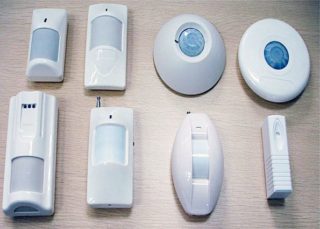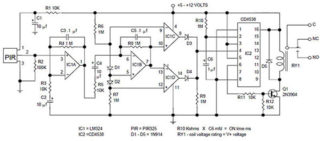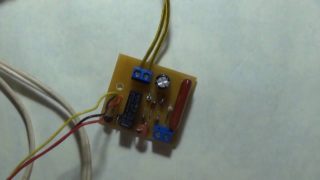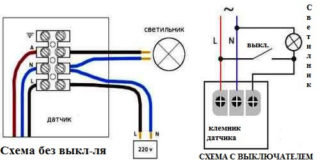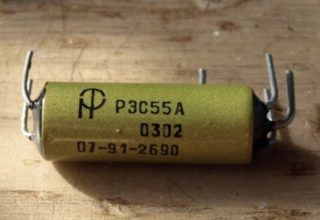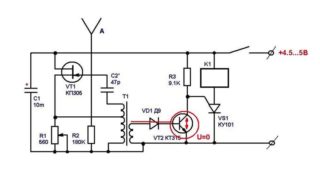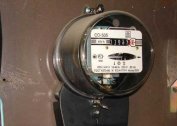Special electronic devices that respond to movement in the range of their sensitive element are increasingly popular among ordinary consumers. With their help, it is possible not only to protect important objects from the penetration of unauthorized persons, but also to control the operation of equipment connected to them (illuminators, in particular). Before making a motion sensor with your own hands, you will need to familiarize yourself with the existing varieties of these devices, as well as with schemes for their inclusion.
Types of sensors
In accordance with the used principle of control signal generation, all motion sensors are divided into the following types:
- Ultrasonic Sensitive Elements (US).
- Radio frequency devices (RF).
- Infrared devices (IR).
- Laser sensors
Each of these devices uses its own type of radiation recorded by the sensitive element. The first variety responds to the ultrasound signal reflected from a moving object, and the second works according to the same principle, but already in the radio frequency spectrum.
Infrared sensors, unlike the others, do not use the reflected signal, but detect a moving person or animal by the thermal radiation of their body.
Laser sensors respond to the reflected signal in the wavelength range corresponding to the pump frequency.
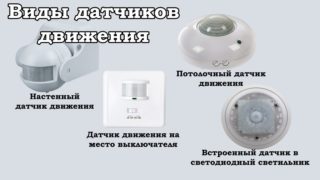 According to their purpose, all these products are divided into the following types:
According to their purpose, all these products are divided into the following types:
- security;
- lighting switches;
- home appliance switches.
The first type of sensors allows you to turn on a powerful spotlight that illuminates protected areas in front of the house or garage when an unauthorized person enters them. Models of the second type control the lighting of work areas located indoors. They turn on the light when a person approaches the area of the garbage collection, for example, and turn off when he leaves. Sensors that control the operation of household appliances are triggered when a person approaches and connect to the network an electric kettle in the kitchen or a TV in the living room.
When choosing a homemade sensitive instrument circuit, they usually proceed from the simplicity of its implementation.
Homemade motion sensors
DIY motion sensor circuits are simple enough so that anyone can make them at home. The most common among users are the following options:
- light sensor;
- capacitive sensor;
- heat device assembled on the basis of the Arduino kit
The first in this list is a device consisting of an integrated light source and a transistor photocell placed at a certain distance. When a moving person crosses the communication line, the light beam is interrupted, after which the actuator is activated. Immediately after this, the lamp connected to it turns on. In devices of the second type, the principle of changing the capacity of a room when a person appears in it is used. Therefore, its main element is a distributed capacitor, consisting of self-made capacitive structures.
The sensor, assembled on the basis of the Arduino constructor, is triggered when the pattern of thermal radiation changes.
Do it yourself
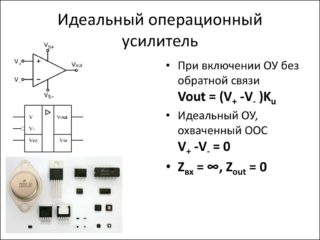 Self-production of a light sensitive device begins with the preparation of the necessary instrument and material. To build it you will need:
Self-production of a light sensitive device begins with the preparation of the necessary instrument and material. To build it you will need:
- electric soldering iron;
- measuring device - multimeter;
- bokoreza and tweezers;
- transistor photocell;
- operational amplifier (op amp);
- set of parts: capacitor, resistors and relay RES55;
- a ready-made power supply unit that supplies voltage to the circuit.
It is also necessary to stock up on an old laser pointer, which serves as a source of a light signal and a set of wires.
A photocell can be made independently, taking as a basis any old transistor (P416, for example). To do this, take side cutters, and then use them to “bite” the transistor cover, leaving a platform with three legs. Under the influence of light, the crystalline base of the opened triode will work as a photocell with a slightly lower sensitivity.
Assembly order
An old, but working power supply from 4.5 to 12 Volts is taken, the power connector is cut off from it. The tap is formed in the form of two conductors (plus and minus), which are conveniently soldered into the circuit. You can determine the polarity of the power supply using a multimeter.
All subsequent operations look like this:
- From the prepared parts, a simple scheme of the receiver of the light beam from the laser illumination is assembled.
- She herself is connected to the power supply, for which she will have to use a soldering iron.
- The assembled part with the receiving element is placed in a box of a suitable size; wherein the cap of the photosensitive member is brought out.
Upon completion of assembly operations, proceed to the installation of a home-made sensor and its subsequent connection.
Installation and connection
A do-it-yourself light sensor is most conveniently integrated in the doorway. In this case, the person entering the room will necessarily cross the line formed by the pointer beam and the light radiation receiver (photocell).
If the system is located outdoors, the receiver placed in a plastic box during installation is slightly obscured by a makeshift visor. Sometimes a piece of light-transmitting material is used for these purposes, covering the receiving opening in the box. The use of such techniques can reduce the influence of other light sources reflected from white surfaces, for example.
The installation height of the pointer and indoor receiver is selected to be one meter. This arrangement is optimal for most family members and at the same time, the device will not work when moving animals. This height also eliminates the possibility of a laser entering the eyes of an adult.
To turn on and operate the circuit, a relay of the RES 55A type is used, the winding of which is supplied with voltage from the executive part. The operation order of a homemade device:
- Under the influence of a light beam in a normal (not switched on) state, a current flows through the photoresistor, leading to its separation.
- A charge is accumulated on the capacitor connected to the output, which creates a certain potential on its plates (the system is in equilibrium).
- When a barrier in the form of a man appears, the receiver-photoresistor closes, and the charge accumulated on the plates flows off through a parallel-connected resistance.
- This leads to a decrease in potential at the control point of the op-amp almost to zero, as a result of which a low-voltage voltage is supplied to the relay winding.
The relay contacts close the power supply circuit of the lamp, which is immediately supplied with a network voltage of 220 volts. After the passage of a person, the system will remain unchanged as long as the switch remains with the button on.
Making and tuning a microwave sensor
For the manufacture of a microwave sensor, experience with high-frequency generator devices will be required. The amateur circuit of a transistor generator on a field structure is taken as the basis. The receiver is made according to a transformer selective circuit with a key stage on the transistor KT315, loaded on a detector diode.
The system works like this:
- In the absence of a moving object, the amplitudes of the signals of the generator and receiver are approximately equal and mutually compensated.
- For this reason, the voltage at the input of the key and detector is zero and the relay connected to the output does not work.
- When a signal balance appears in a person’s sensitivity zone, the signal balance is disturbed and, as a result, a voltage appears at the output of the circuit.
- It is fed to the relay winding, when triggered, 220 Volts through its contacts enter the lamp.
To configure the system, a variable resistor is provided in the circuit, the value of which determines the position of the operating point of the output transistor. When it changes, the moment of its operation is corrected - the sensitivity of the circuit.
